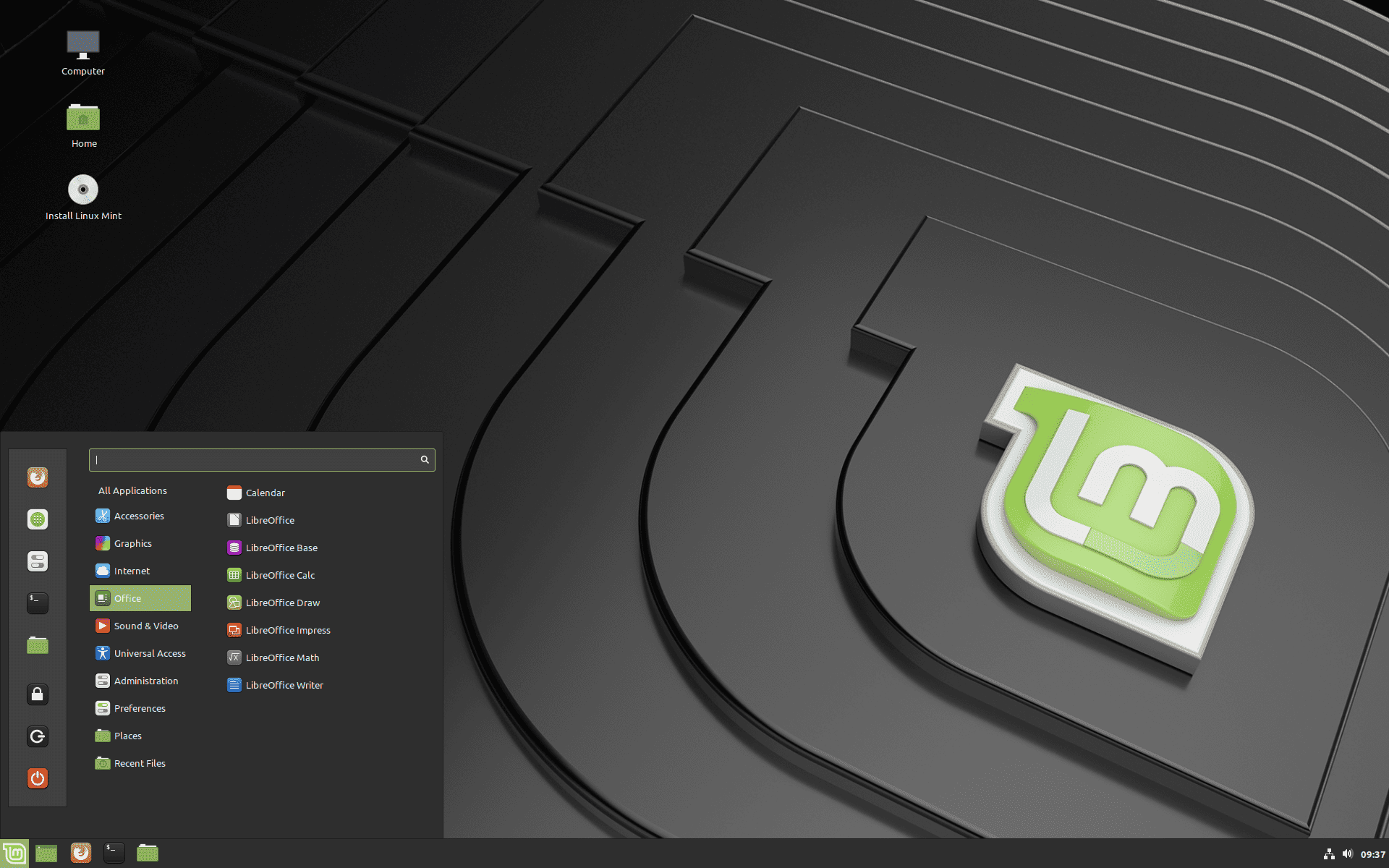Choosing between Ubuntu and Linux Mint can be tough. Both are popular and user-friendly Linux distributions. Ubuntu has a modern interface and a wide variety of software, while Linux Mint is known for being easy to use and performing well, especially on older computers. If you’re new to Linux, you might find Linux Mint more approachable. It’s praised for its simplicity and comes with different desktop styles to choose from.
On the other hand, Ubuntu has a clean and modern interface that appeals to beginners and experienced users alike. Both systems offer customization options and a range of software. Ubuntu’s Unity desktop environment provides a streamlined experience, while Linux Mint excels in user-friendliness. Your choice between Ubuntu and Linux Mint should depend on your personal preferences and needs. Both have their strengths, so it’s important to consider what matters most to you.
Two Popular Linux Distributions: A Head-to-Head Comparison
User Interface and Experience
- Ubuntu: Features the modern GNOME desktop environment, which prioritizes simplicity and sleek design. Some users find it less intuitive than traditional desktop layouts.
- Linux Mint: Offers a choice of desktop environments, including Cinnamon, MATE, and Xfce. Cinnamon is the most popular, resembling a classic Windows-like interface with a familiar taskbar and start menu.
Software Availability and Package Management
- Ubuntu: Boasts a vast software repository with access to a wide range of applications. Utilizes the Snap package format, which some users find less user-friendly than traditional package managers.
- Linux Mint: Uses the APT package manager, known for its ease of use and compatibility with a wide range of software. Also provides access to the Ubuntu software repositories for additional applications.
Hardware Compatibility and Driver Support
- Ubuntu: Generally has good hardware support, especially for newer devices. However, some users may encounter issues with older or less common hardware.
- Linux Mint: Inherits Ubuntu’s hardware support, offering similar compatibility for most devices. May be a better choice for older hardware due to its lighter resource usage.
Performance and Resource Usage
- Ubuntu: Can be resource-intensive, especially with the GNOME desktop environment. May not perform as well on older or less powerful hardware.
- Linux Mint: Generally lighter and faster than Ubuntu, especially with the Cinnamon or MATE desktop environments. A good choice for users with older hardware or limited resources.
Target Audience
- Ubuntu: Appeals to a broad range of users, from beginners to experienced Linux users. Its focus on modern design and features makes it a popular choice for those who prefer a cutting-edge experience.
- Linux Mint: Well-suited for beginners and users transitioning from Windows due to its familiar interface and ease of use. Also a good option for those who prioritize performance and stability.
Comparison Table: Ubuntu vs Linux Mint
| Feature | Ubuntu | Linux Mint |
|---|---|---|
| Desktop Environment | GNOME | Cinnamon, MATE, Xfce |
| Package Management | Snap, APT | APT |
| Hardware Support | Good, especially for newer devices | Good, especially for older devices |
| Performance | Can be resource-intensive | Lighter and faster |
| Target Audience | Wide range, including beginners and experienced users | Beginners, Windows users, users prioritizing performance |
Key Takeaways
- Linux Mint is often more user-friendly for beginners.
- Ubuntu offers a clean and modern interface.
- Both distros provide ample software and customization.
Comparing Ubuntu and Linux Mint
Ubuntu and Linux Mint are two popular Linux distributions. Each has unique features, desktop environments, and performance needs. This guide breaks down their main aspects to help you choose which is best for you.
Background and Origin
Ubuntu was created by Canonical in 2004. It is based on Debian and focuses on usability for all users.
Linux Mint started in 2006 and also stems from Debian and Ubuntu. It aims to provide a more desktop-friendly experience.
Both distros target new and intermediate users, with a focus on convenience and ease of use.
Desktop Environments and User Interface
Ubuntu uses GNOME by default. It has a sleek, modern look with a dock on the left side.
Linux Mint offers three main desktop environments: Cinnamon, MATE, and XFCE. Cinnamon is the most popular and is designed to be elegant and easy to use.
Ubuntu Desktops:
- GNOME: Default, modern
- Kubuntu: KDE
- Xubuntu: XFCE
- Lubuntu: LXQT
- Ubuntu Budgie, Ubuntu Mate, Ubuntu Kylin, Ubuntu Studio: Special flavors
Mint Desktops:
- Cinnamon: Elegant, user-friendly
- MATE: Traditional
- XFCE: Lightweight
Software Management and Availability
Both use APT for package management. Ubuntu is known for Snap packages while Mint avoids them.
Ubuntu:
- APT: Traditional package manager
- Snap: Universal packages
Linux Mint:
- APT: Traditional package manager
- Software Manager: User-friendly, avoids Snap
Mint’s Software Manager is simpler and faster than Ubuntu’s Software Center.
Performance and System Requirements
Ubuntu requires at least 2GB RAM and 25GB storage. Ubuntu can be heavier on resources.
Linux Mint is more lightweight. It needs 1GB RAM and 15GB storage, making it better for older machines.
Ubuntu:
- RAM: 2GB minimum
- Storage: 25GB minimum
Linux Mint:
- RAM: 1GB minimum
- Storage: 15GB minimum
Support and Community
Ubuntu has strong backing from Canonical. It offers professional and community support.
Linux Mint relies on donations and a community-driven model. Both have active user forums and extensive documentation.
Ubuntu:
- Professional support: Available
- Community support: Strong forums
Linux Mint:
- Community-driven: User donations
- Forum support: Active
Security and Privacy
Ubuntu offers regular updates and Long-Term Support (LTS) releases. It has robust security but sometimes includes data collection features.
Linux Mint emphasizes privacy and minimal background data collection. It also offers LTS releases and regular updates.
Ubuntu:
- Updates: Regular and LTS
- Privacy: Some data collection
- Security: Frequent updates
Linux Mint:
- Updates: Regular and LTS
- Privacy: Minimal data collection
- Security: Frequent updates
Installation and Upgrade Processes
Ubuntu’s installer is user-friendly with options for dual-booting. Upgrading Ubuntu can be straightforward with its built-in updater.
Linux Mint’s installer is also easy to use. It simplifies partitioning and upgrading without losing data.
Ubuntu:
- Installer: User-friendly
- Upgrade: Built-in updater
Linux Mint:
- Installer: Easy to use
- Upgrade: Data-safe
User Experience and Accessibility
Ubuntu targets a broad audience with an intuitive GNOME desktop. It suits both beginners and advanced users.
Linux Mint’s Cinnamon desktop is very user-friendly. It aims for elegance with simplicity, ideal for new users.
Ubuntu:
- GNOME: Intuitive
- Usability: Broad audience
Linux Mint:
- Cinnamon: User-friendly
- Usability: New users
Compatibility and Integration
Ubuntu integrates well with modern hardware and software. It’s often chosen for cloud and server solutions.
Linux Mint focuses on desktop use. It works well with older hardware and is good for multimedia and gaming.
Ubuntu:
- Hardware: Modern
- Uses: Cloud, servers
Linux Mint:
- Hardware: Older compatibility
- Uses: Multimedia, gaming
Philosophy and Licensing
Ubuntu promotes free and open-source software but includes some proprietary drivers and codecs.
Linux Mint includes more proprietary software out of the box, focusing on ready-to-use systems.
Ubuntu:
- Philosophy: Free, open-source with optional proprietary
- Licensing: FOSS
Linux Mint:
- Philosophy: Ready-to-use, accepts proprietary
- Licensing: Mixed
These detailed sections cover the crucial aspects of Ubuntu and Linux Mint to help in making a well-informed choice.
Frequently Asked Questions
This section answers common questions about Ubuntu and Linux Mint. It covers differences in their user interfaces system performance programming suitability gaming experience and compatibility with older laptops.
What are the main differences between Ubuntu and Linux Mint in terms of user interface?
Ubuntu uses GNOME 3, which is sleek and modern. It has a unique interface that might take time to get used to.
Linux Mint offers a more traditional desktop experience using Cinnamon, MATE, or Xfce. It resembles older versions of Windows, making it easier for new users.
How do Linux Mint and Ubuntu compare when it comes to system performance?
Linux Mint is lighter and can run faster on older hardware. Its Software Manager is more responsive and less resource-heavy.
Ubuntu comes with extra services and features that may slow it down on lower-end machines. Both distributions, however, provide good performance on modern hardware.
Which would be more suitable for programming tasks, Ubuntu or Linux Mint?
Both Ubuntu and Linux Mint are excellent for programming. Ubuntu offers a larger repository of software and tools for developers.
Linux Mint is user-friendly and also includes many of the same tools due to its Ubuntu base. The choice depends on personal preference.
What are the pros and cons of using Linux Mint over Ubuntu for gaming?
Linux Mint can be better for gaming on older systems due to its lighter resource usage. It supports most of the same games as Ubuntu.
On the other hand, Ubuntu might have better support for newer games and hardware due to its larger community and frequent updates.
Between Linux Mint and Ubuntu, which is generally recommended for older laptops?
Linux Mint is recommended for older laptops. It is designed to be lightweight and run well on less powerful hardware. The Cinnamon, MATE, and Xfce desktops offer various levels of resource usage, making it a flexible choice.
Ubuntu’s standard GNOME interface might be too demanding for older systems.
What are some of the known disadvantages of opting for Linux Mint instead of Ubuntu?
Linux Mint might not always have the latest updates and features since it relies on the more stable, but older Ubuntu base.
Ubuntu’s larger user base and community mean more online help and resources are available. This can be helpful for troubleshooting and learning.






